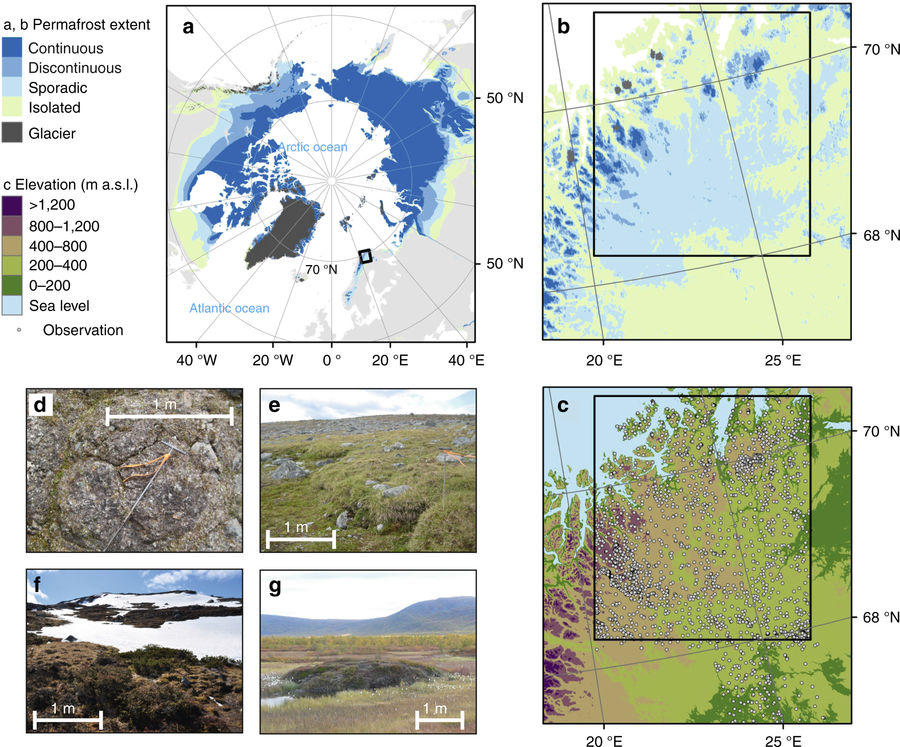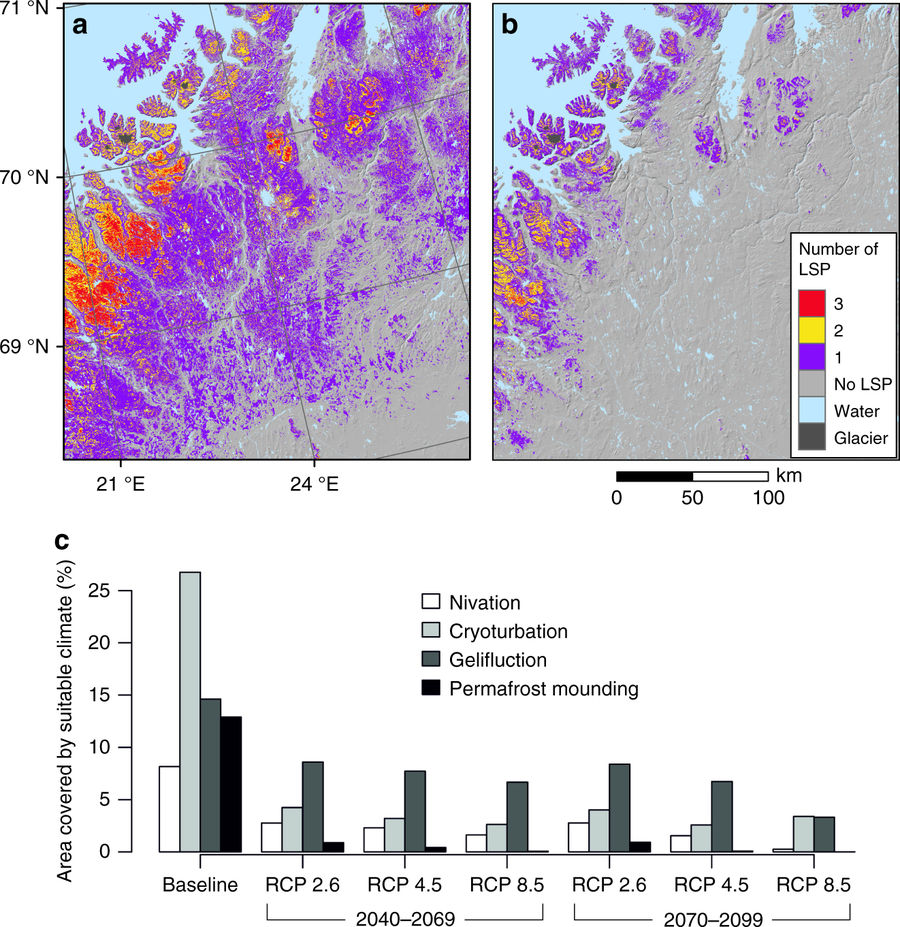Aalto, J., S. Harrison, and M. Luoto, 2017: Statistical modelling predicts almost complete loss of major periglacial processes in Northern Europe by 2100. Nature Communications, 8, 515. doi:10.1038/s41467-017-00669-3

Fig.1 The location of the study domain and LSP observation sites in northernmost Europe. a, b The study area in relation to the circum-Arctic extent of permafrost indicated as: continuous=90–100% of the area covered by permafrost, discontinuous=50–90%, sporadic=10–50% and isolated=0–10%, respectively. c The observation locations (n = 2,917) and the relief of the study area. Black rectangles in b, c depict the model prediction domain. Photos show examples of typical surface features of cryogenic land surface processes (scales are only directive): cryoturbation (d; small-scaled polygonal patterned soil) gelifluction (e; gelifluction lobes), nivation (f, snow accumulation sites) and permafrost mounding (g; palsas), respectively. Photos by J.A. and M.L.

Fig.5 The predicted loss of conditions allowing cryogenic land surface processes. a, b The suitable overlapping conditions for the land surface processes (LSP) under baseline (i.e., current climate of 1981–2010) and future climate (2040–2069 RCP 4.5), respectively, while c shows the area covered by suitable climate for individual LSP at each time period and climate change scenario. The current extent of glaciers were masked out from the analysis.